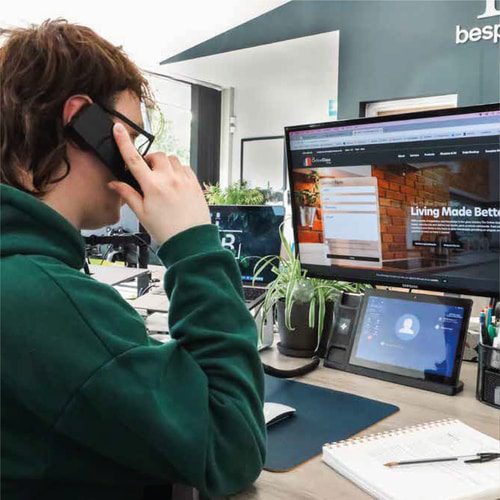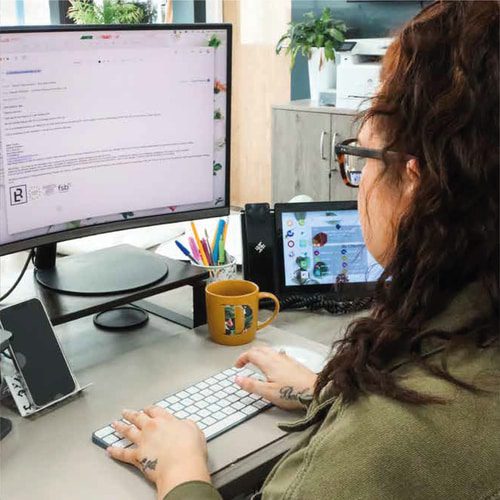
How to Use Microinteractions in Your Website Design
Welcome to Blue Whale Media, your go-to experts in website design and development. Our team specializes in creating visually stunning websites that are not only beautiful but also highly functional. One aspect of web design that we pay great attention to is the use of microinteractions. Microinteractions are the small, subtle interactions that take place between a user and a website. They are designed to make the user experience more engaging and enjoyable. In this blog post, we’ll be discussing how you can use microinteractions to improve your website design and take your user experience to the next level. So, let’s dive in!
What are microinteractions and why are they important?
Microinteractions help to create a more user-friendly website by making it easier for users to complete tasks and navigate through the site. They also add an element of fun and delight to the user experience, which can help to keep users engaged and coming back for more.
At Blue Whale Media, our web designers in Wolverhampton believe that microinteractions are an essential part of website design. They not only improve the user experience but also help to create a more visually appealing website. By paying attention to the details and incorporating microinteractions into your website design, you can create a more engaging and enjoyable user experience for your visitors.
Examples of microinteractions in web design
There are many different types of microinteractions that can be incorporated into website design. Some examples include:
- Hover effects: When a user hovers over a button, image, or text, the colour or size of the element changes to give feedback to the user.
- Animation: Adding subtle animations to elements can help to draw attention to them and make the website feel more dynamic.
- Loaders: Adding a loader animation can help to keep users engaged while they wait for content to load.
- Toggles: Using toggles to switch between different states or options can make the user experience more intuitive and interactive.
- Notifications: Providing users with clear and concise notifications can help to keep them informed about what is happening on the website and reduce frustration.
By incorporating these microinteractions into your website design, you can create a more user-friendly and enjoyable experience for your visitors. At Blue Whale Media, we have years of experience in website design and development, and we know how to use microinteractions to take your website to the next level. So why not get in touch with us today and see how we can help improve your website?
Best practices for using microinteractions effectively
When incorporating microinteractions into your website design, it is important to keep in mind the user experience and how the microinteractions will enhance it. Here are some tips on how to incorporate microinteractions into your website design:
- Understand your users: Before adding microinteractions, you need to understand who your users are and what they are looking for. This will help you to create microinteractions that are relevant and helpful to your users.
- Keep it simple: Microinteractions should be simple and intuitive. They should provide clear feedback to the user and be easy to understand and use.
- Use animation sparingly: While animation can add an element of fun to the user experience, it should be used sparingly. Too much animation can make the website feel cluttered and overwhelming.
- Be consistent: Consistency is key when it comes to microinteractions. Use the same microinteraction throughout the website for similar actions, such as hovering over buttons.
- Test and iterate: Once you have added microinteractions to your website, it is important to test them and see how users respond. Make changes based on user feedback and iterate until you have a microinteraction that works well for your users.
By following these tips, you can incorporate microinteractions into your website design in a way that enhances the user experience and makes your website more engaging and enjoyable to use.
5. Benefits of using microinteractions in website design
There are several benefits of incorporating microinteractions into your website design. Here are some of the main advantages:
- Improved user experience: Microinteractions can make your website more user-friendly and engaging. By providing clear feedback and helping users to navigate the website more easily, microinteractions can improve the overall user experience.
- Increased engagement: Microinteractions can make your website more fun and interactive, encouraging users to spend more time on the site and explore its features. This can lead to increased engagement and ultimately, more conversions.
- Enhanced brand identity: Microinteractions can be designed to reflect your brand identity and personality. This can help to create a consistent and memorable user experience that reinforces your brand values and messaging.
- Reduced frustration: Microinteractions can help to reduce frustration by providing clear feedback and guiding users through the website more easily. This can lead to a more positive user experience and a lower bounce rate.
- Improved functionality: Microinteractions can be used to improve the functionality of your website. For example, they can be used to provide feedback on form submissions or to indicate that a page is loading.
By incorporating microinteractions into your website design, you can enjoy these benefits and create a more engaging, user-friendly website that reflects your brand identity and values.
Conclusion: Enhance your website design with microinteractions
In conclusion, microinteractions are a powerful tool in website design that can greatly enhance the user experience, increase engagement, and improve functionality. By following the best practices outlined in this blog, you can incorporate microinteractions into your website in a way that is effective and meaningful. At Blue Whale Media, we understand the importance of user experience and the role that microinteractions play in creating a successful website. If you need help incorporating microinteractions into your website design, don’t hesitate to contact us to learn more about our web design and development services.





